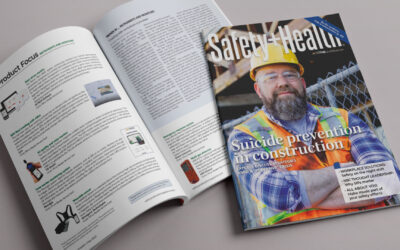In the age of Industry 4.0, organizations that leverage data win.
At StrongArm, we live and breathe the daily grind of the Industrial Athlete. Our goal is to use the unique data we drive to help organizations operate with safety top of mind. A significant part of that is helping organizations gauge the health of their safety programs and culture, including employee turnover and retention.

According to the U.S. Bureau of Labor Statistics, employee turnover rates have nearly doubled in 2020 with no sign of slowing down in 2021. With clear distinction, segments like 3PL, logistics, distribution and trade are the hardest impacted sectors.
Through the peak of COVID, companies spanning myriad industries and job functions — including many that we currently count as clients — quickly became home to newly deemed “frontline workers,” as the daily demands of commerce shifted swiftly to last-mile delivery hubs and e-commerce.
A great weight of the global economy was subsequently thrust onto the shoulders and backs of manual materials handlers, delivery drivers and those who kept us going while we were locked indoors. As this demand continues to increase and the access to talent decreases, it’s essential that we find ways to solve this for the betterment of our infrastructure — and that all starts with the health and well-being of our Industrial Athletes.
Below are some practices and principles to retain those valuable employees, their tribal knowledge and inherent necessity of their roles:
If you can measure it, you can manage it
In the age of Industry 4.0, organizations that leverage data win. The data used to manage workflows and throughput should not be the single source of truth for managing the efficacy of Industrial Athletes.
Humans are complex and capable but understanding how they get hurt is an incredible challenge. Wearable technology innovations such as the FUSE Risk Management Platform utilize wearables to take the guesswork out of injury prevention and help managers understand what each individual is capable of, not what some spreadsheet says they need to be capable of.
The data collected from the FUSE Sensor learns about each associate; it actually understands the job type and workflows of the user and communicates back via haptic feedback in real time before an injury happens. Wearable safety tech like ours can reduce injury rates by more than 45% and attrition by over 25%.
Using real-world, actionable safety data — we call it the Safety Score — as a means to proactively manage gives Industrial Athletes a metric to perform in a zone of their individual capability versus a punitive throughput metric that puts injury down as a cost of doing business. The results are a no-brainer: Data helps organizations do well by doing good. (See: StrongArm’s Safety Wearables Help Keep Walmart Associates Safe at Work.)
Industrial Athletes need coaches, not drill sergeants
Individual safety data is fuel for cultural change in an organization that focuses on it’s employees. Safety culture is just that, culture: It cannot not simply manifest itself at the daily stretch and flex or as toolbox talk, but rather must grow from a shared goal of cultivating conversation, not criticism around keeping every employee safe, happy and productive.
A common, intuitive and articulate data benchmark is the surest way to transform once-punitive measures into lasting, positive coaching moments.
Consider this common scenario: A safety manager walks around the warehouse floor looking to catch someone acting in a way that’s perceived as unsafe. No malice intended, but their focus is inherently fixed on risky movements or behaviors. Perhaps he gets lucky and catches one coaching moment — one bad lift out of 100 good lifts before it, then singling that Athlete out for the negative.
The Fuse Platform, instead, enables managers to lead with historic yet predictive data, bolstering a fair and progressive safety culture. A roster is provided daily: The top 10 performers are recognized as shining examples of an enduring safety culture within the facility; the 10 lowest safety scores are communicated with on an individual basis and given actionable steps to quickly improve.
Metrics matter — gamify them
Such rapid pace and persistent workflows can make work mundane. In such mundanity, valuable employees are lost. Gamifying the experience at work gives your employees something to work towards above simple, rote productivity.
Our Safety Score is a mutually beneficial means to do so. Again, think of it like a coach, pushing you to find the sweet spot between safety and productivity. It might sound simplistic, but when employees can rank that score against their peers, healthy mini-competitions arise that can reward the type of behavior that keeps everyone safe and engaged with the organization.
Focus on new hire training
For those new managers out there looking to make a difference with data, new hires are low hanging fruit.
For example, during peak retail and e-commerce season, the labor market is incredibly competitive and it is a challenge to fill the roles required in preparation for the impending rush. Therefore, employees are often hustled into a role with limited experience or training.
Our data indicates that nearly 60% of employee attrition happens within the first 90 days of employment at such manual material handling jobs. With safety data at your fingertips, you can train new hires at a different pace than tenured veterans, easing them into the pace expected of a seasoned veteran rather than going from zero to 100 in the first shift.
+++++
Safety data provides a means to gauge what individuals are capable of and adjust their role, behavior and expectations around output accordingly.
It is the commitment and responsibility of managers to keep good employees engaged and safe in their work. That kind of attitude drives a positive and enduring safety culture. Safety culture then drives retention. And retention bolsters productivity.




